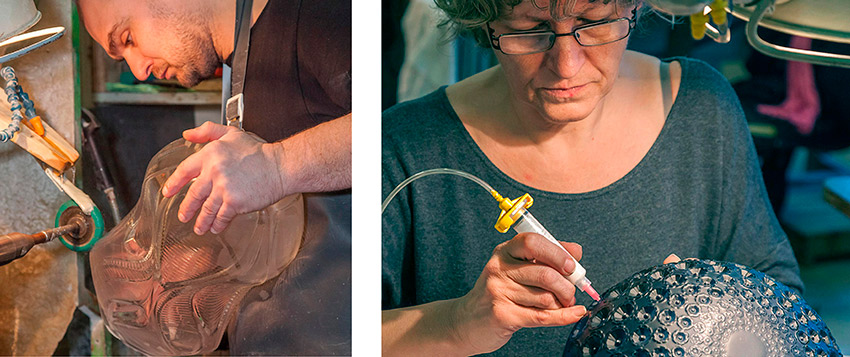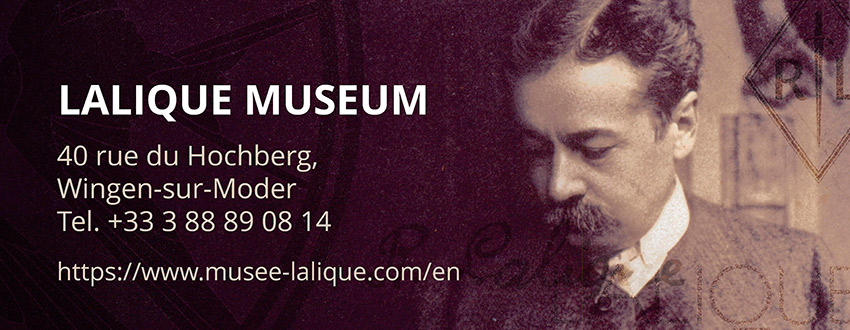LALIQUE MUSEUM
The Legacy of a Genius of Crystal Design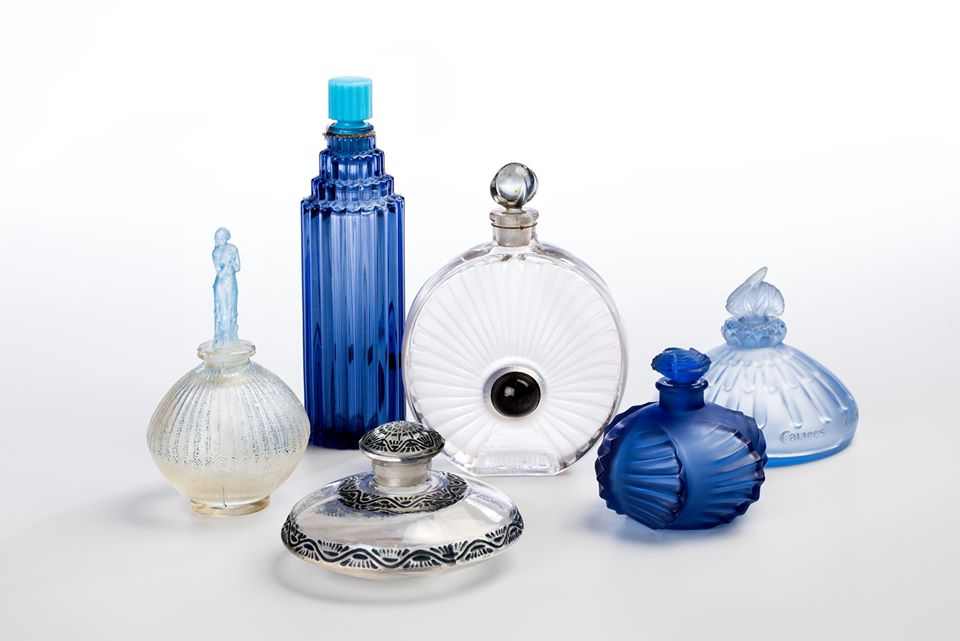
The museum presents the extraordinary creations of an artist
who revolutionized the design of perfume bottles, bequeathed us
surprising creations in art objects made of glass and was
one of the most famous jewelry designers of the Art Nouveau era
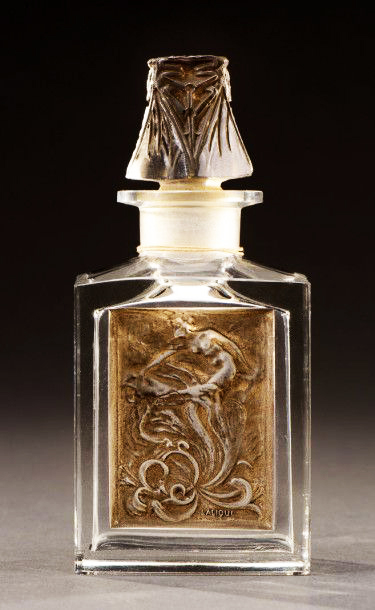
The beginning of the Lalique revolution in the design and manufacture of perfume bottles.
After his successful career as a jewellery designer in the last quarter of the 19th century, René Lalique’s relationship with the creation of new perfume designs begins with his meeting with the visionary perfumer François Coty, who commissions him to design and manufacture bottles for his perfume line.
This relationship led Lalique to become the most outstanding glass creator and industrialist of the time, a revolution in the concept of bottle design, the influence of which has survived to the present day.
“L’Effleurt”, second version, 1912, h. 4.3 in.
First bottle of perfume created by Lalique for Coty.
According to Christie Mayer Lefkowith,
“The artist gave a visual rendition of this name
through the image of an otherwordly woman,
born from the wind or perhaps from fire”
HIGHLIGHTS FROM
THE BOTTLES COLLECTION
Of the 650 pieces on display in the museum, 250 correspond to perfume bottles and powder boxes, that summarize the style of René Lalique that make his creations unmistakable.
Some exceptional pieces have been contributed by the Silvio Denz Foundation that give special prominence to this fabulous and diverse collection.
After creating the first bottle designs for François Coty, he was commissioned to design perfume bottles for the most famous brands of his time, such as Houbigant, Molinard, d’Orsay, Roger&Gallet and Worth.
Lalique had the extraordinary ability to create a “unique body” for each fragrance and give the bottle an image that suggested the precious olfactory essences it contained.
René Lalique was an innovator and obtained patents for a number of techniques, including the technique of blowing and pressing simultaneous molds. A visual animation demonstrating this process can be seen on a visit to the museum.
Among Lalique’s most spectacular creations are the sumptuous Tiara flower stopper that crown some bottle designs from 1914-1918.
Tiara flower stopper
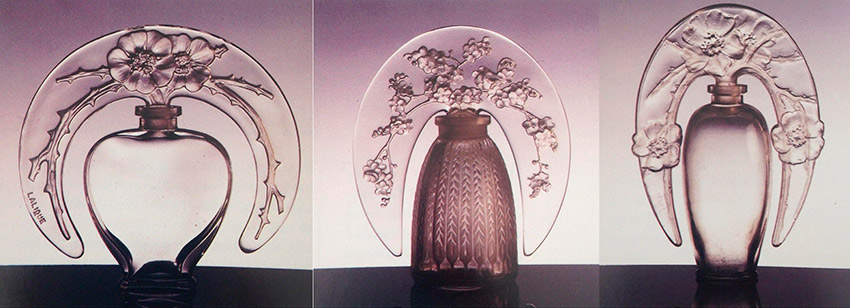
1910
Perfume Bottle “Small leaves” design
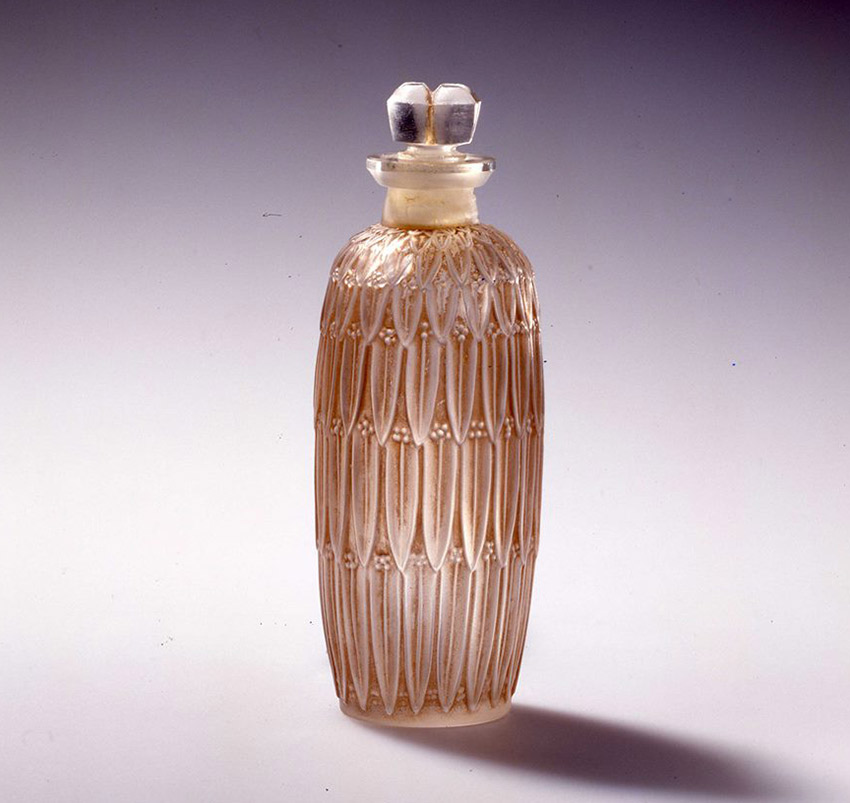
1912
Box and bottle of perfume “Cigalia”, for Roger&Gallet
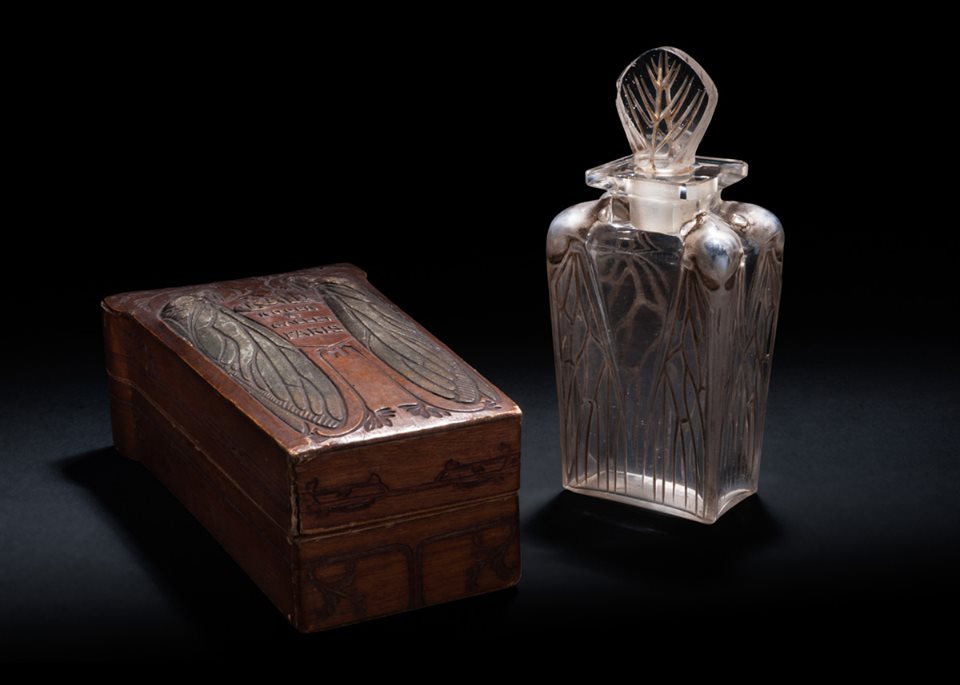
1912
Bottle for “Ambre Antique” perfume by Coty
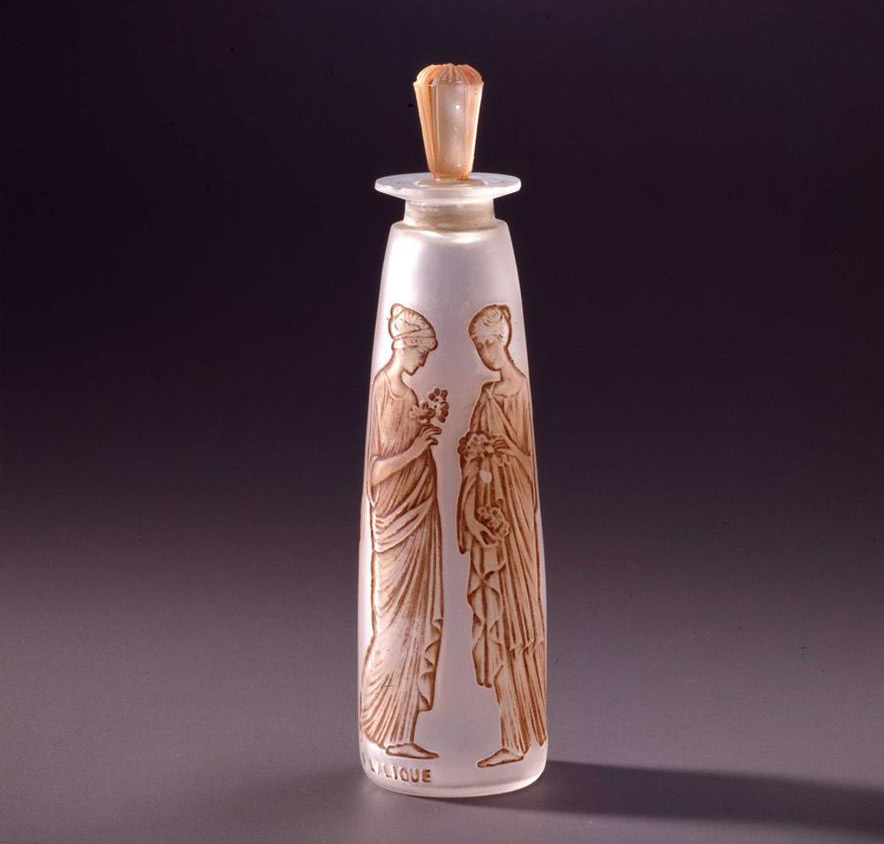
1912
A bee is on the stopper of this “Au coeur des calices” perfume bottle.
Is it a tribute paid to these precious insects
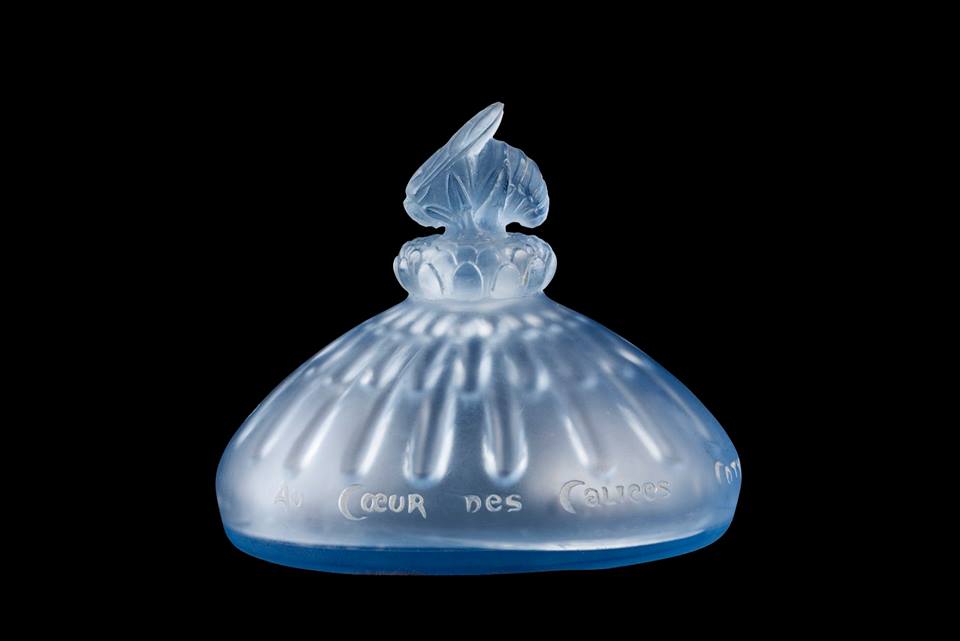
1914
Perfume bottle, “Bouchon myosotis”

1919
Perfume bottle. Swallows are very common in Lalique’s work!
You can find them on this nightlight
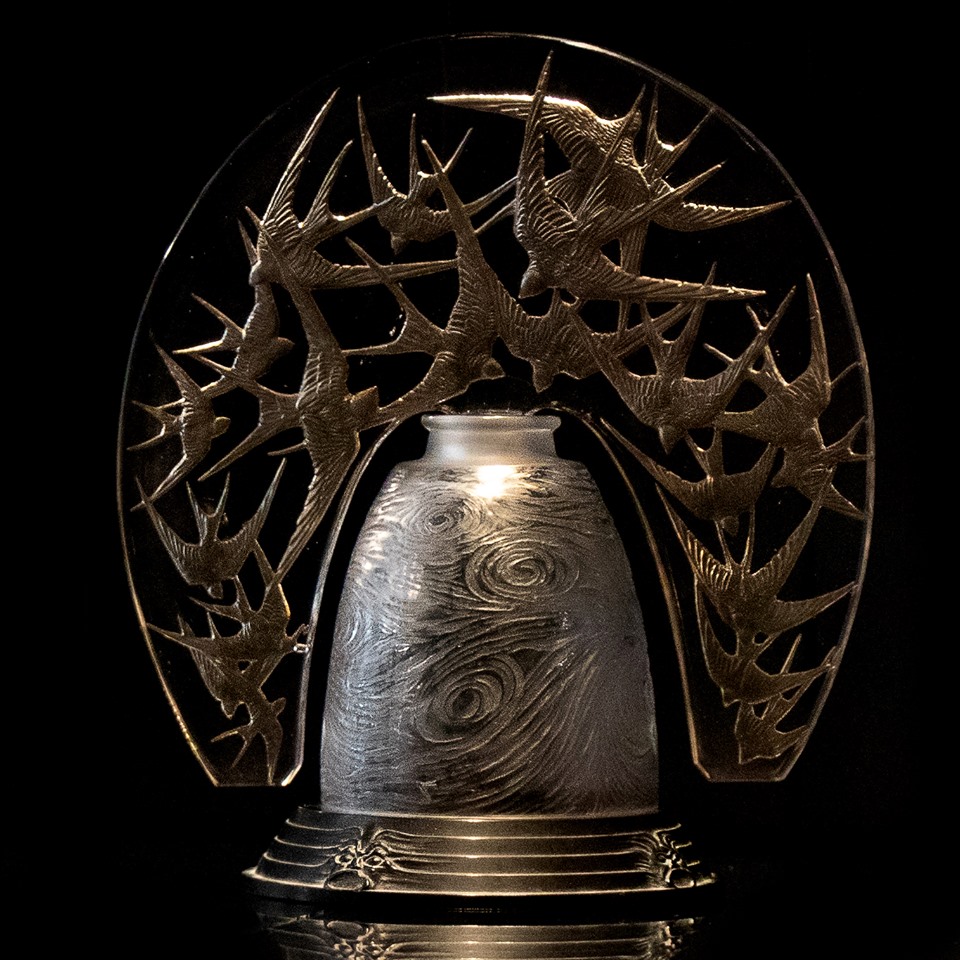
1920
Perfume bottles. Two versions of “Bouchon cassis”
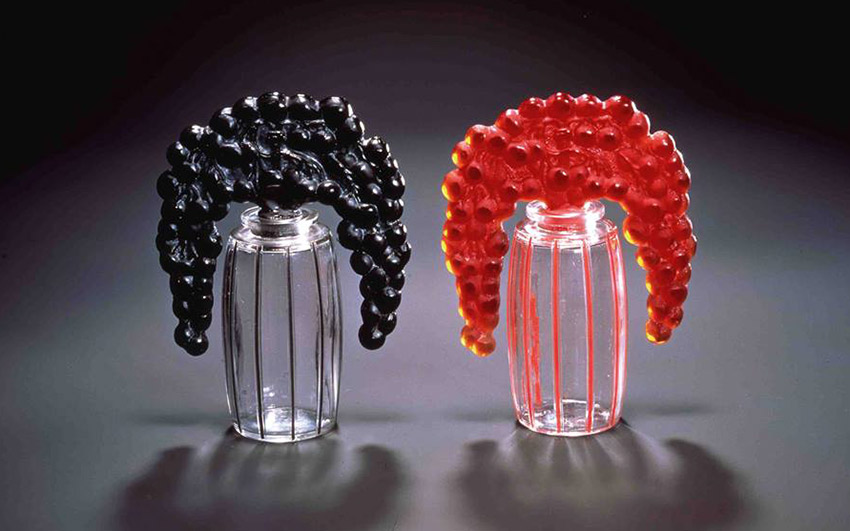
1920
Perfume bottle for “La Belle Saison” by Houbigant
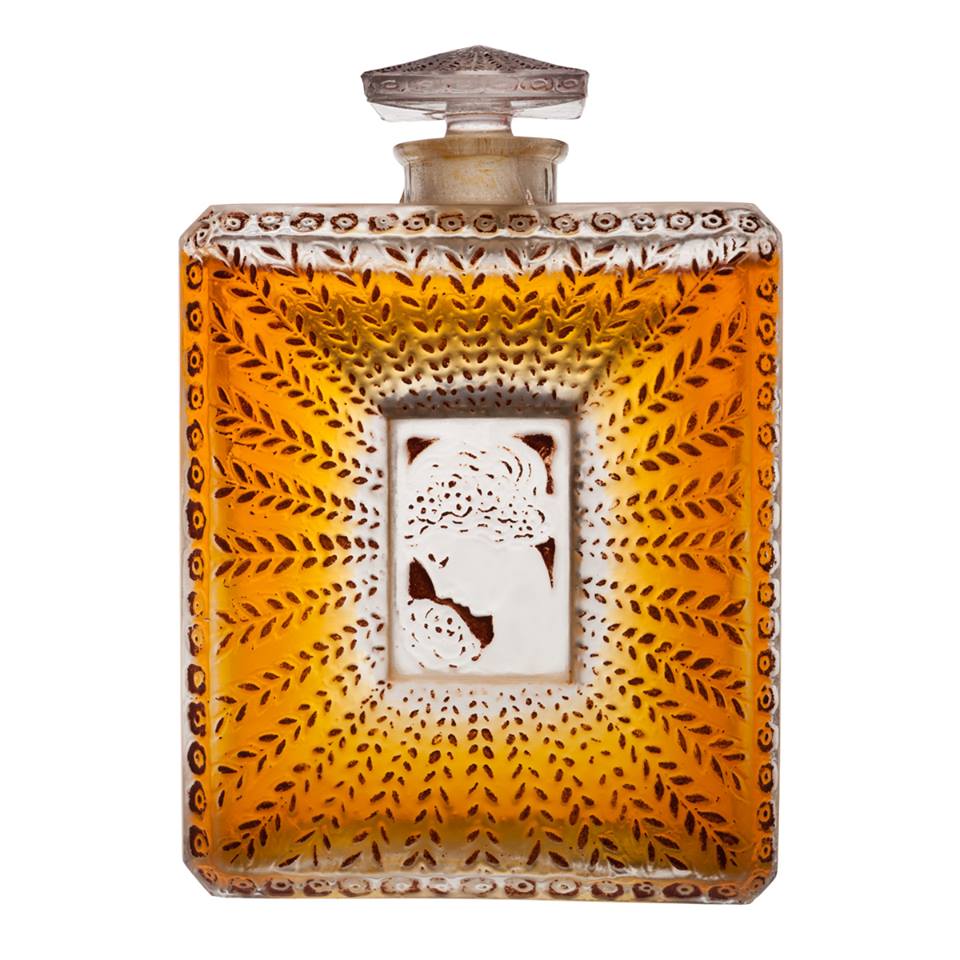
1921
“Powder Puffs” box, in opalescent glass created by René Lalique
from a drawing by his daughter, Suzanne Lalique-Haviland.
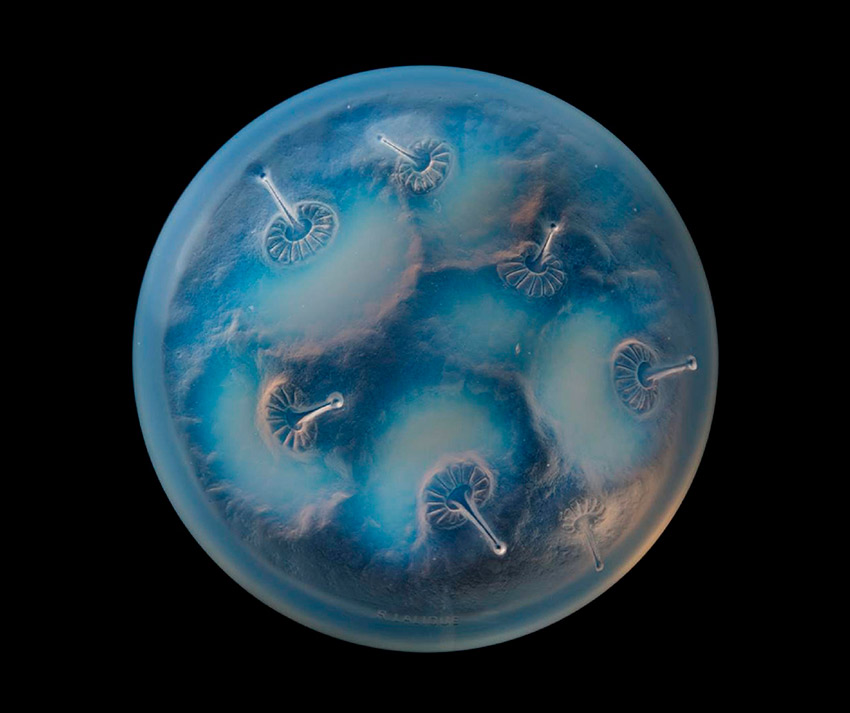
1922
« Le Lys » (The Lily) perfume bottle and the « Jasmin » (Jasmine) powder box
for d’Orsay. These two models are decorated with eglantines
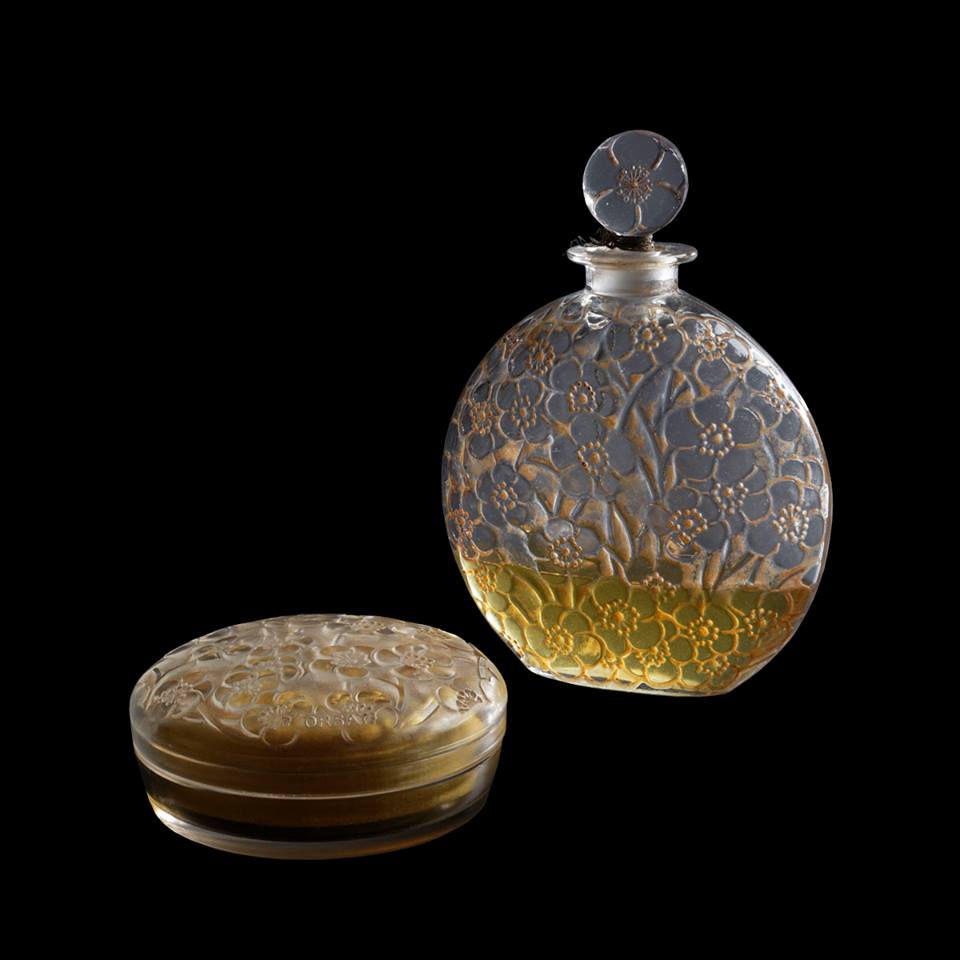
“Le Lys” Perfume bottles for D’Orsay

1922
“Three Dahlias” and “Six Dahlias” boxes. They are both opalescent, but different.
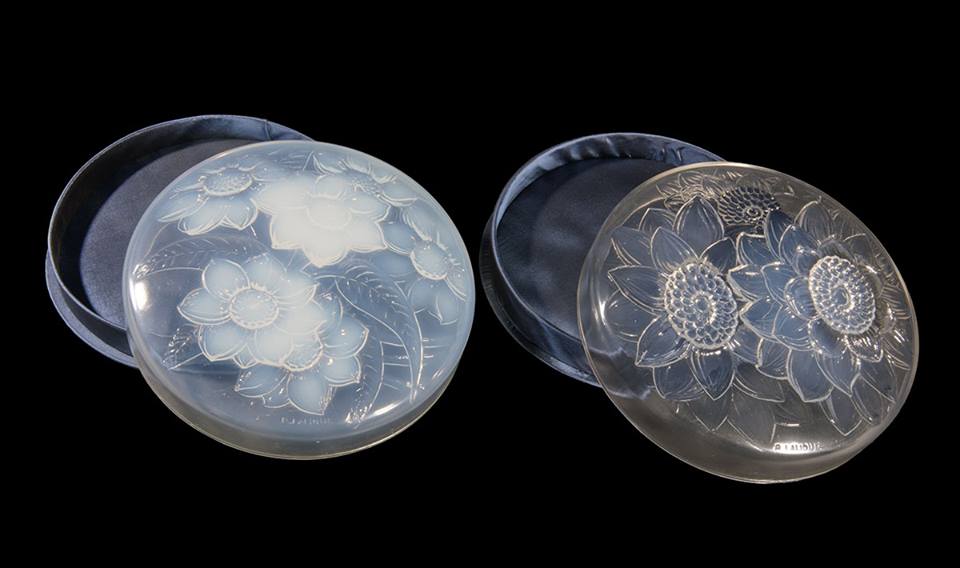
1924
Fontainebleau powder box
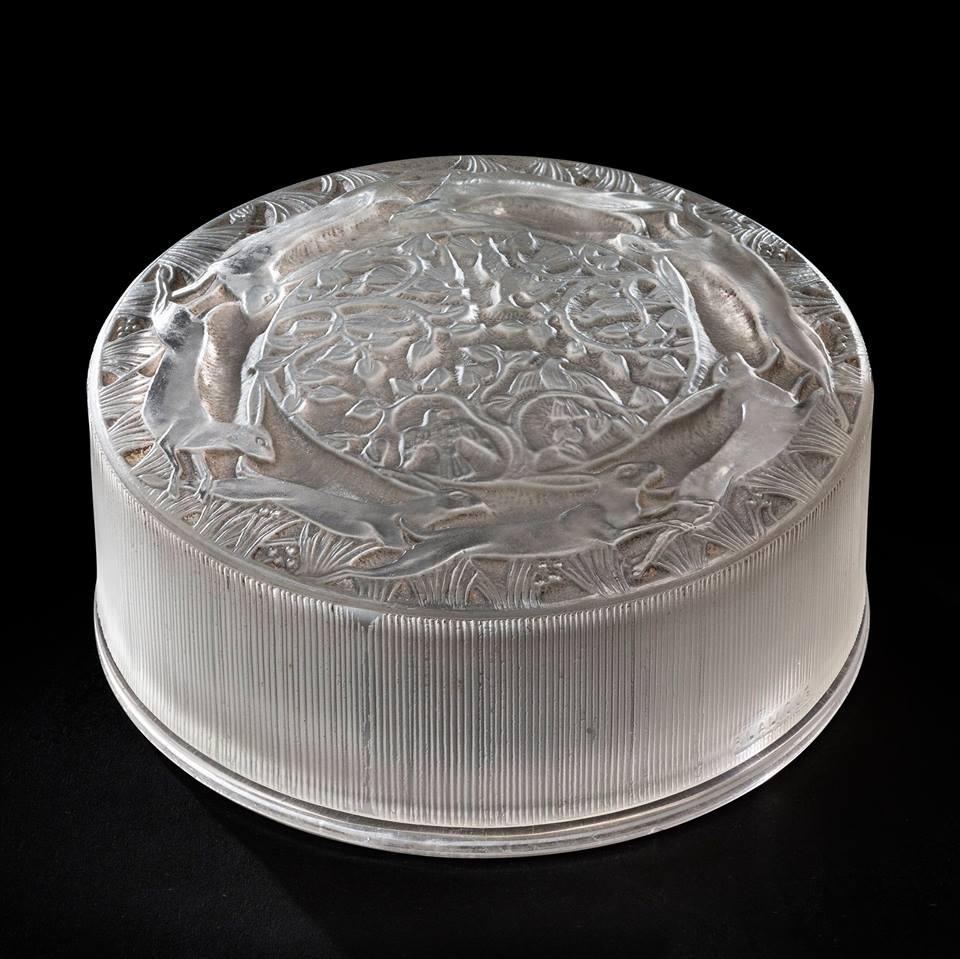
1924
Perfume bottle for ” In the Night” by Perfume Company WORTH
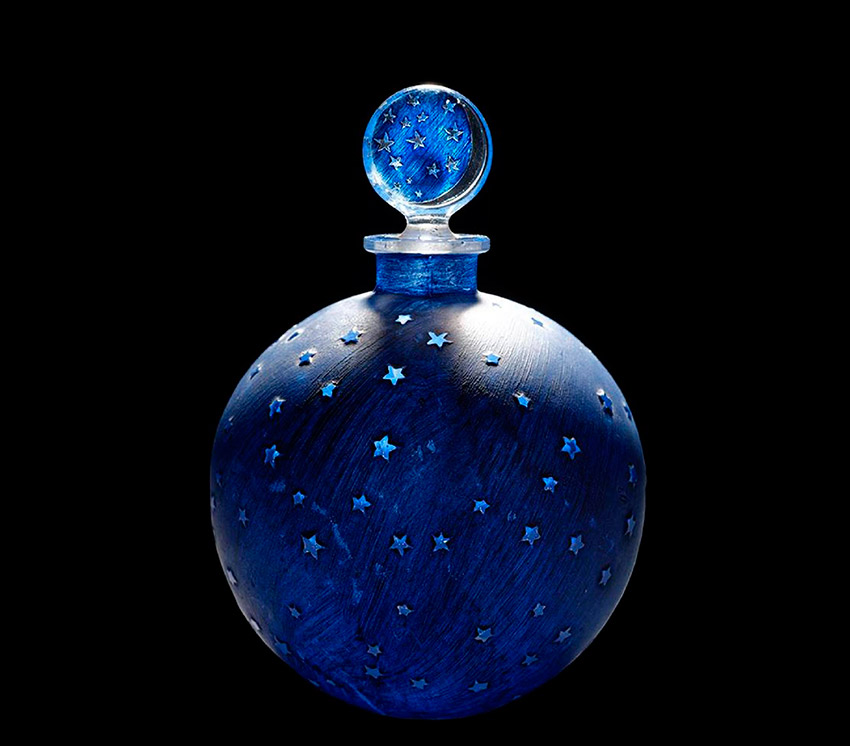
1926
Bottle of perfume that magnificently suggests oriental aesthetics and Jade stone
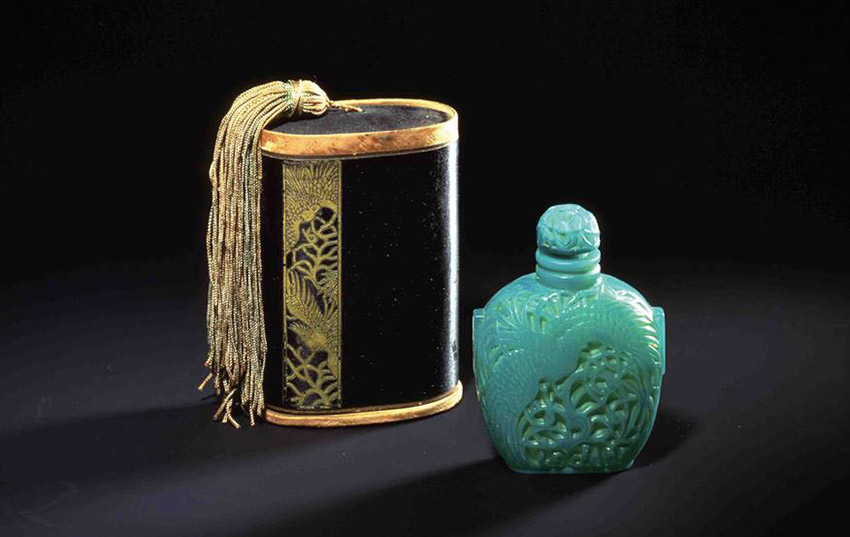
1927
Mermaids swimming in the perfume bottle
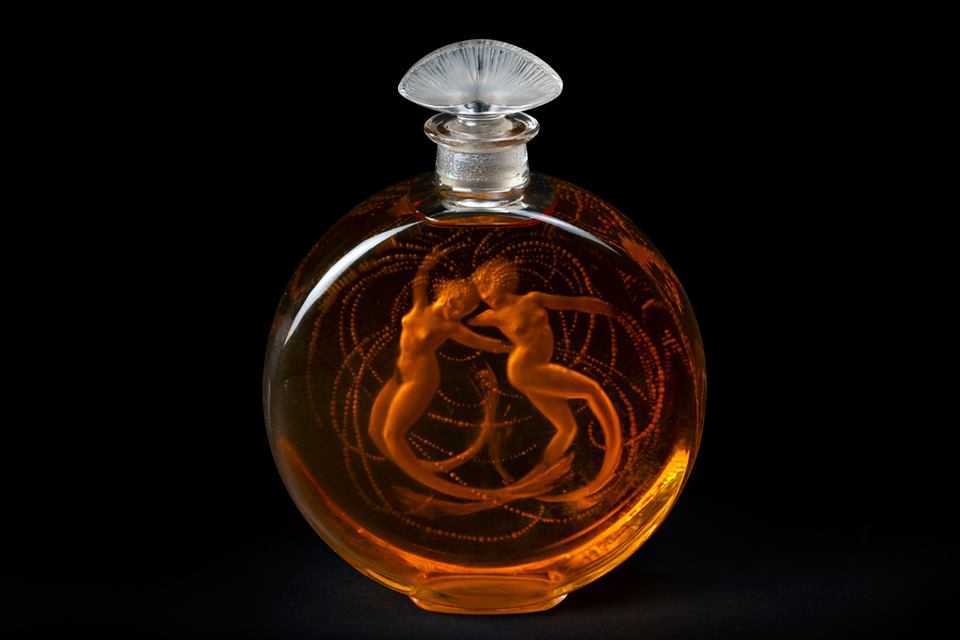
1928
Created by René Lalique
from a drawing by his daughter, Suzanne Lalique-Haviland.
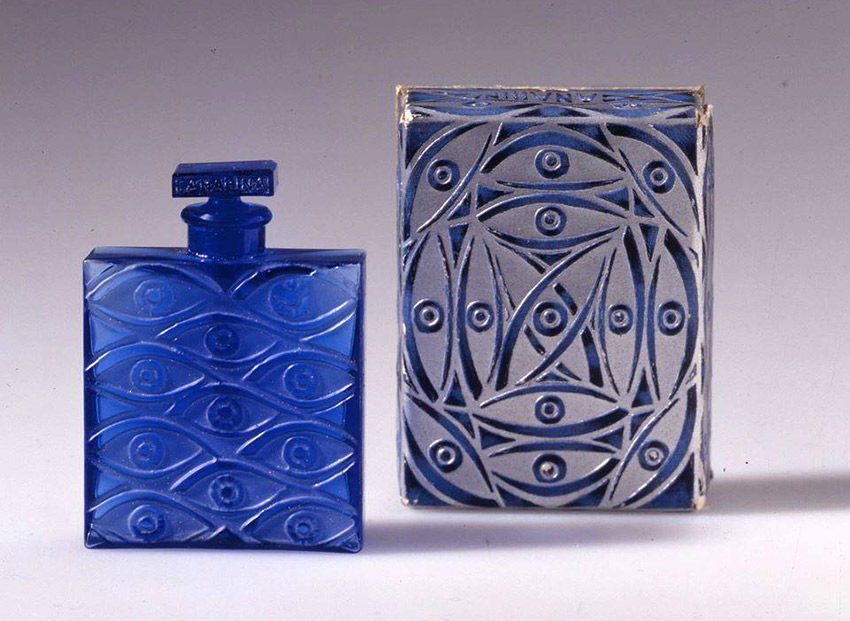
1929
On this egg-shaped perfume bottle created for the Worth brand,
the W forms the pattern of the bottle
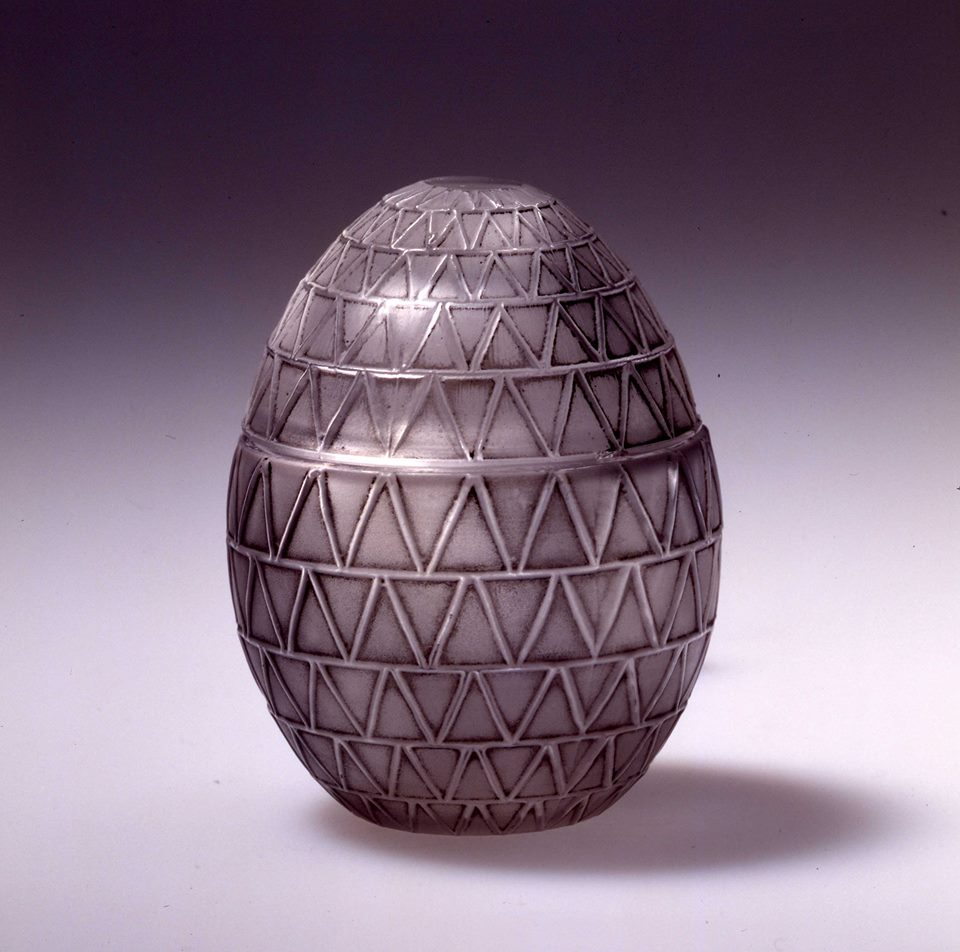
1929
Perfume bottles for WORTH brand
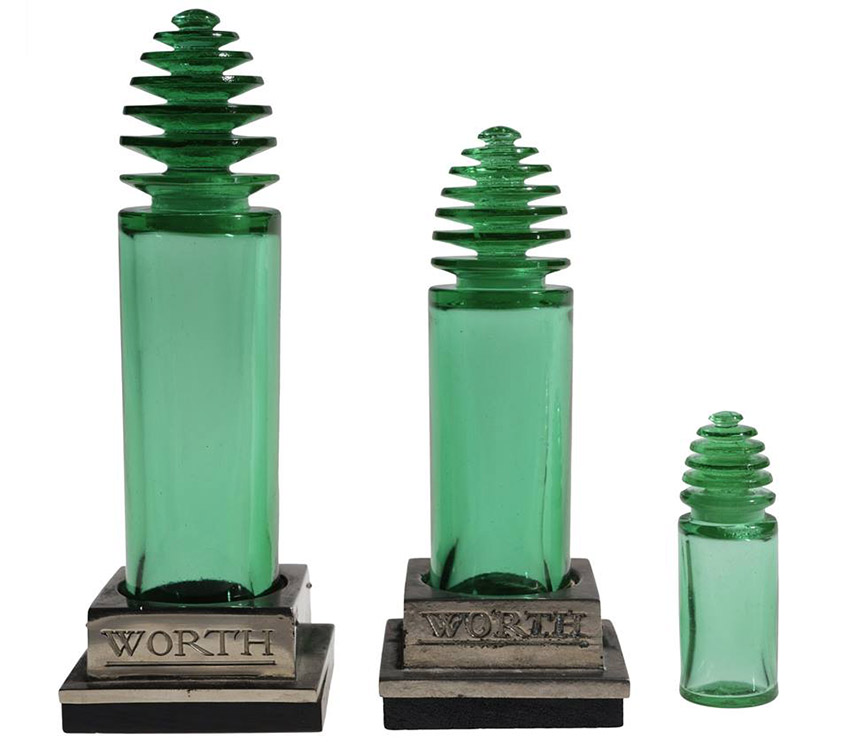
1936
Perfume glass box of “Treasure of the Sea”. Created for “Saks” New York

HIGHLIGHTS FROM THE CRYSTAL
AND GLASS COLLECTION
Lalique’s inventiveness encompassed everything that could be created with glass. This gave way to extraordinary creations of pieces that are authentic objects of art.
The museum preserves the most complete collection of creations that René Lalique made through his prolific career as a glass artist.
BACCHANTES VASE
Creator: René Lalique. Date:1927. Material: Glass.
Pressed glass technique. Property of: Lalique SA
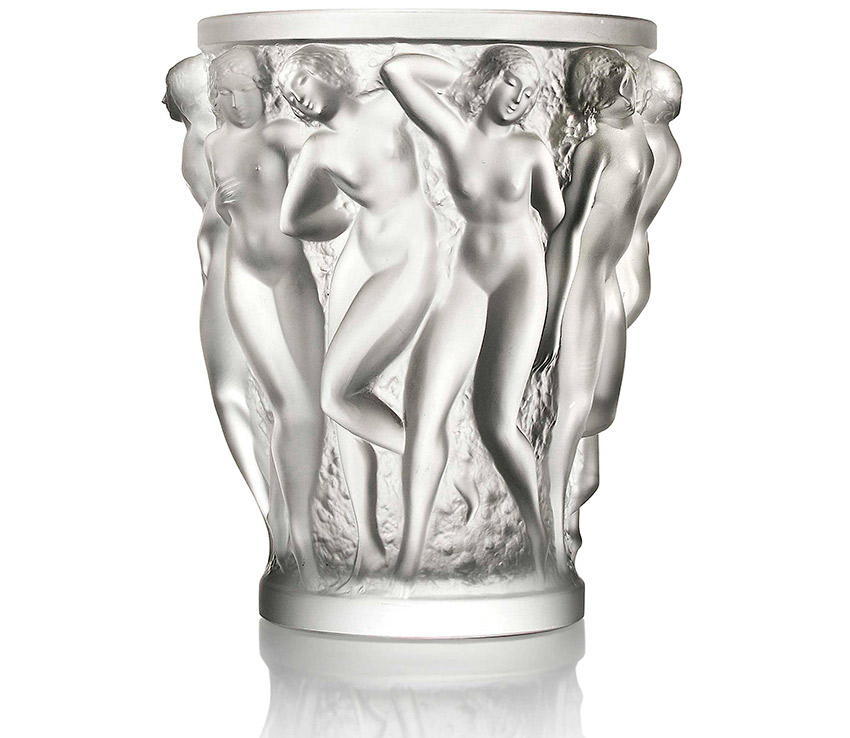
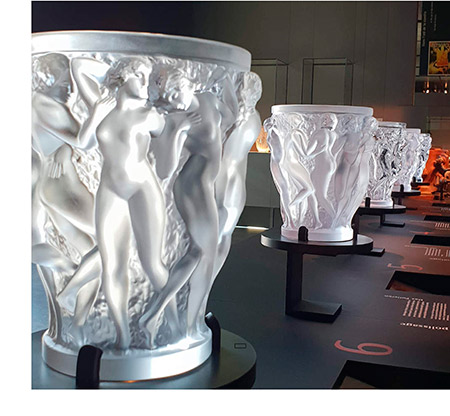
Right photo: tactile table where the visitor can touch
and explore the different facets of the Bacchantes vase
The Bacchantes is one of Lalique’s most emblematic creations, one of the rare pieces that has featured in the catalogue from its origins in 1927 to the present day. Originally made of glass, since 1947 the vase has been made of crystal. In 2010, for the 150th anniversary of René Lalique’s birth, a new version was produced called Révélation Bacchantes, set inside a cube of crystal.
The female form was one of René Lalique’s most constant sources of inspiration throughout his career.
The Bacchantes correspond to the Maenads of Greek mythology. The young priestesses of Bacchus – depicted naked in a bas-relief, performing a round dance to celebrate the god of wine, the vine and excess – exude a haunting aura of sensuality.
It takes around 30 hours to produce a Bacchantes vase! From the mould to the signed piece, you can touch as you explore the different stages in the vase’s production, and view some short films explaining the process in the museum.
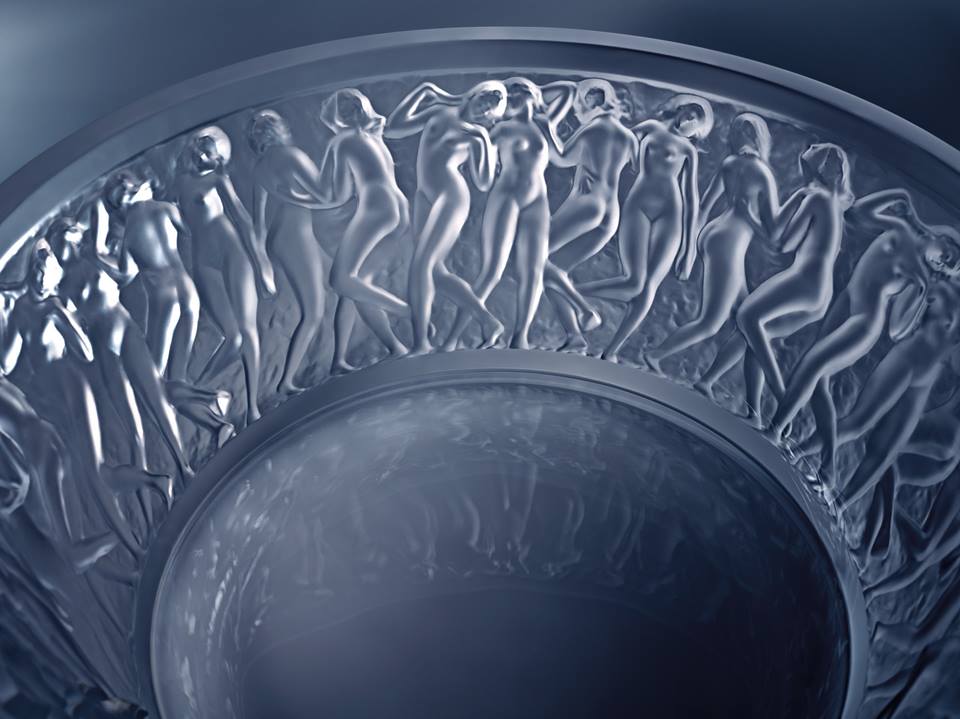
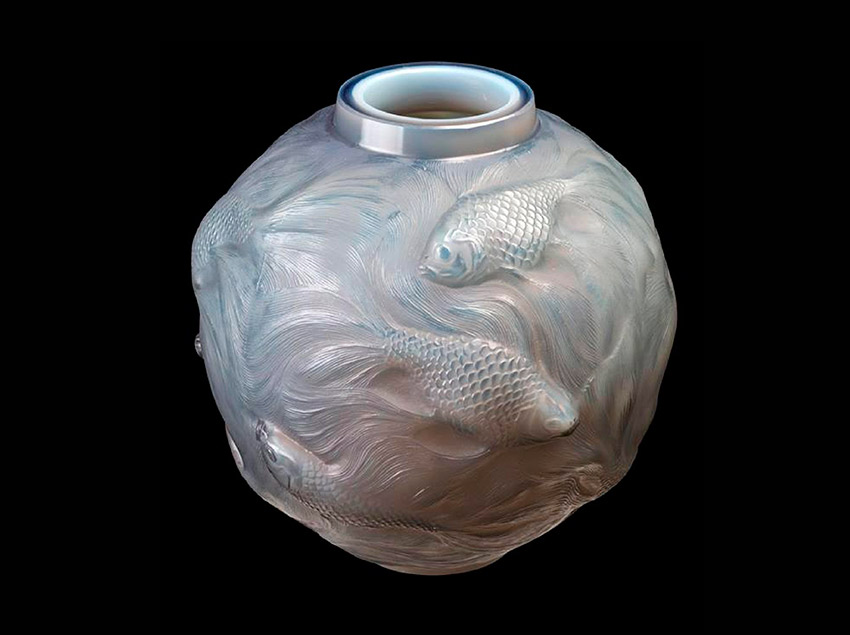
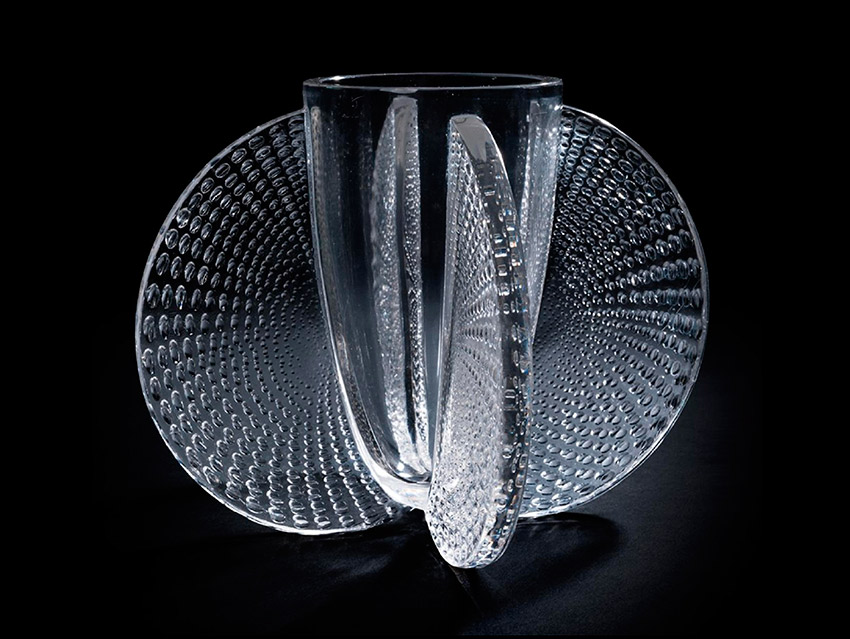
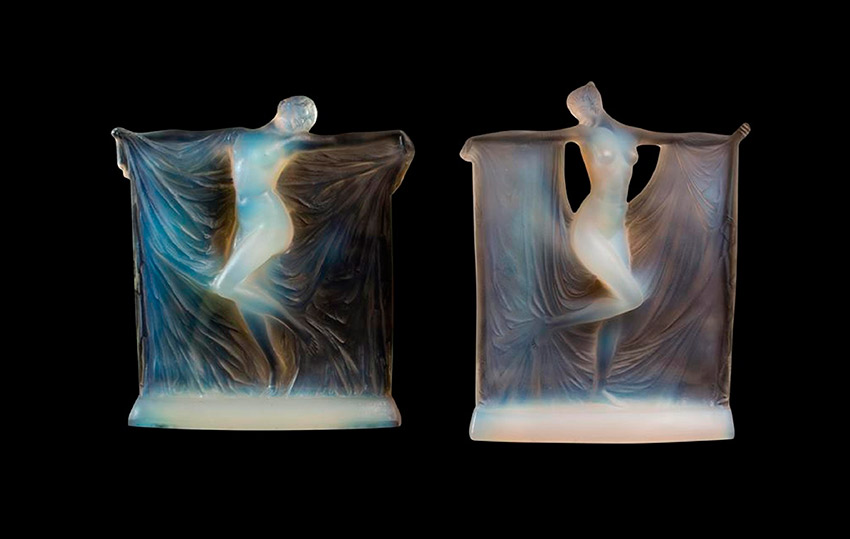


René Lalique experienced success in different fields of creativity by applying glass in chandeliers, car badges, furniture and interior design.
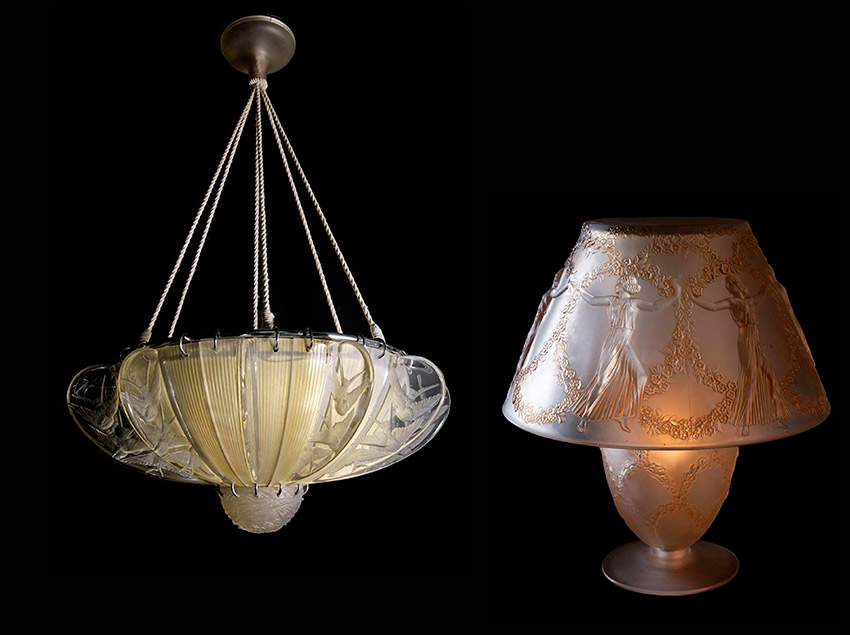
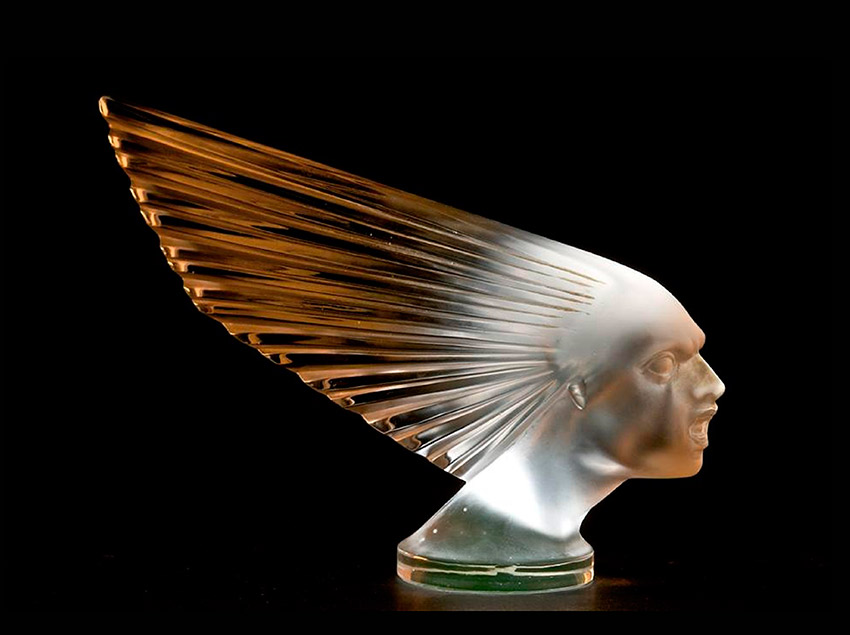

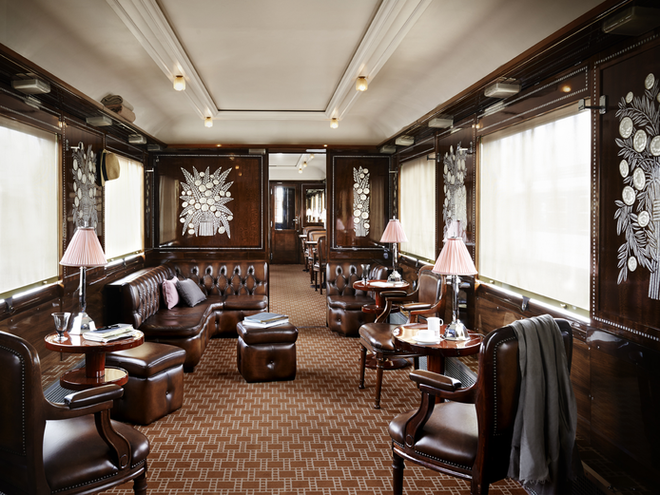
HIGHLIGHTS FROM
THE JEWELRY COLLECTION
After designing jewellery for such important houses of the time as Cartier, Boucheron and George Fouquet, among others, René Lalique created his own “maison” in 1885 with great success among the bourgeoisie and aristocracy of the time.
René Lalique became a real celebrity following the success of his stand at the Universal Exhibition in Paris in 1900. It is precisely at this event that François Coty discovers him and years later they start a professional relationship that revolutionizes the aesthetics of the perfume bottle.
The museum preserves some of his most surprising jewellery creations that elevated Lalique to the highest levels in the world of Art Nouveau jewellery.
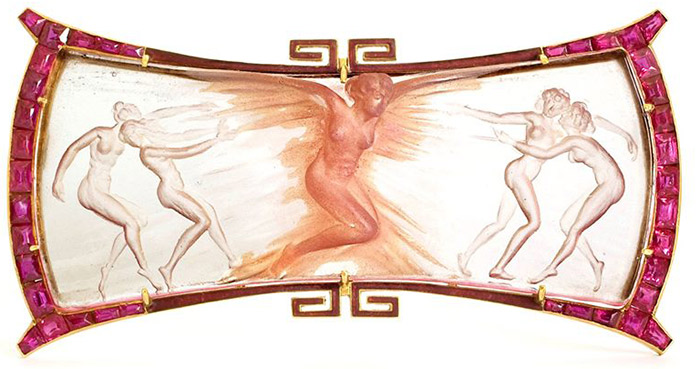

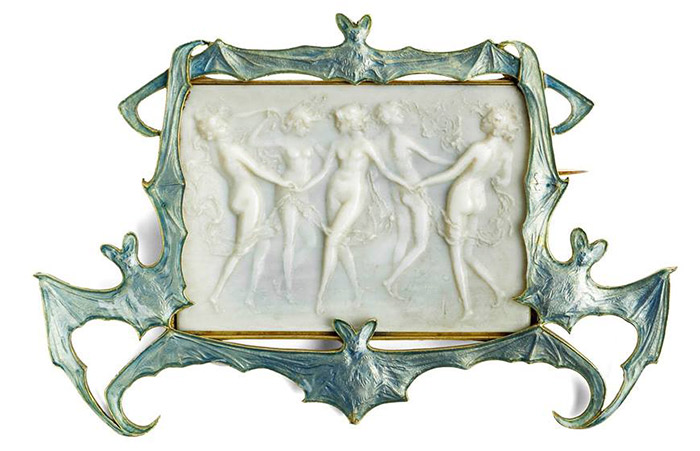

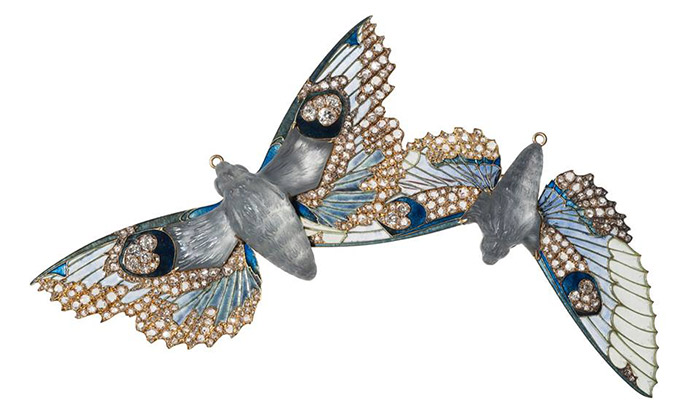
A new concept of custome contemporary jewelry made in crystal
René Lalique earliest pieces reproduced the codes that characterised the jewellery of the late 19th century, using precious stones and metals.
He subsequently broke with tradition and – in the words of Emile Gallé – became “the inventor of modern jewellery”. René Lalique began to use glass, enamel, horn, ivory and semi-precious stones in his creations – it was no longer the cost of the material that counted, but the result. This approach was completely in line with the values of the Art Nouveau movement.
Today Lalique’s current designers are innovating again with the master’s spirit of rupture, creating custome jewels based on the use of crystal.
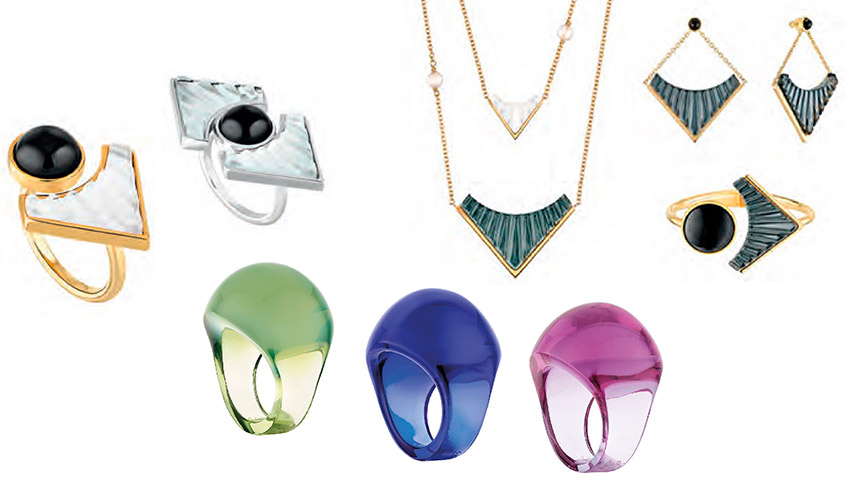
LIMITED EDITIONS by LALIQUE
A glorious heritage in new flask creations to hold luxury fragrances
Each year, since 2011 Lalique’s designers create a new flask and a new fragrance in limited editions. The designs are inspired by the rich legacy of René Lalique’s creations. The fragrances interpret the subtle messages that the design suggests to the perfumer. In every detail, the design of the flask and the fragrance maintains the spirit of perfection and excellence that René Lalique imprinted on all his creations.
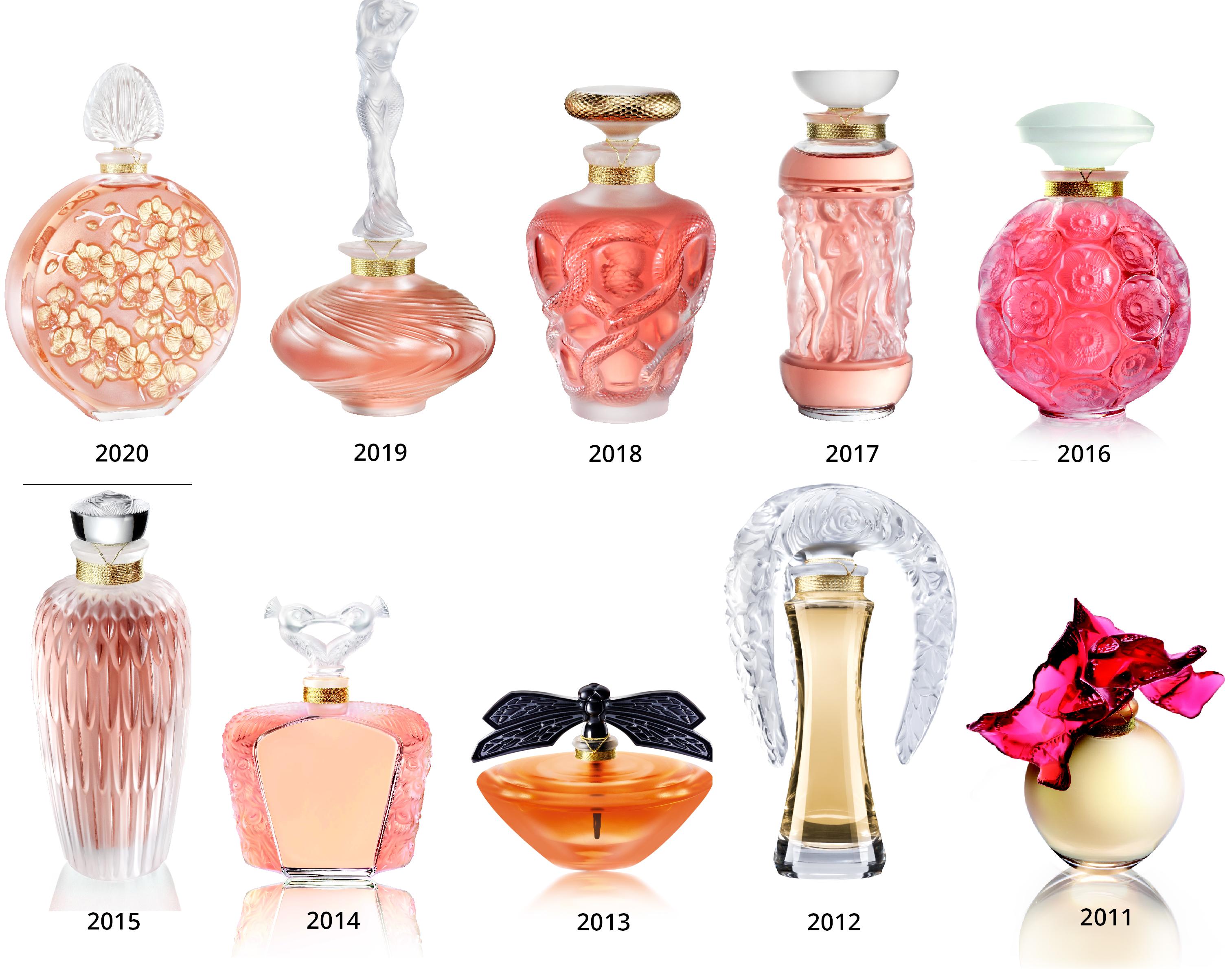
More information on Limited Editions: 2020 2019 2018
THE MUSEUM PROMOTES
CONTEMPORARY ART IN GLASS
The Lalique Museum promotes the use of glass as artistic material. Important architects as Zaha Hadid and Mario Botta and artists as Yves Klein, Rembrandt Bugatti, Damien Hirst, Anish Kapoor and Terry Rodgers, have created superb art objects made of glass that were produced in our factory.
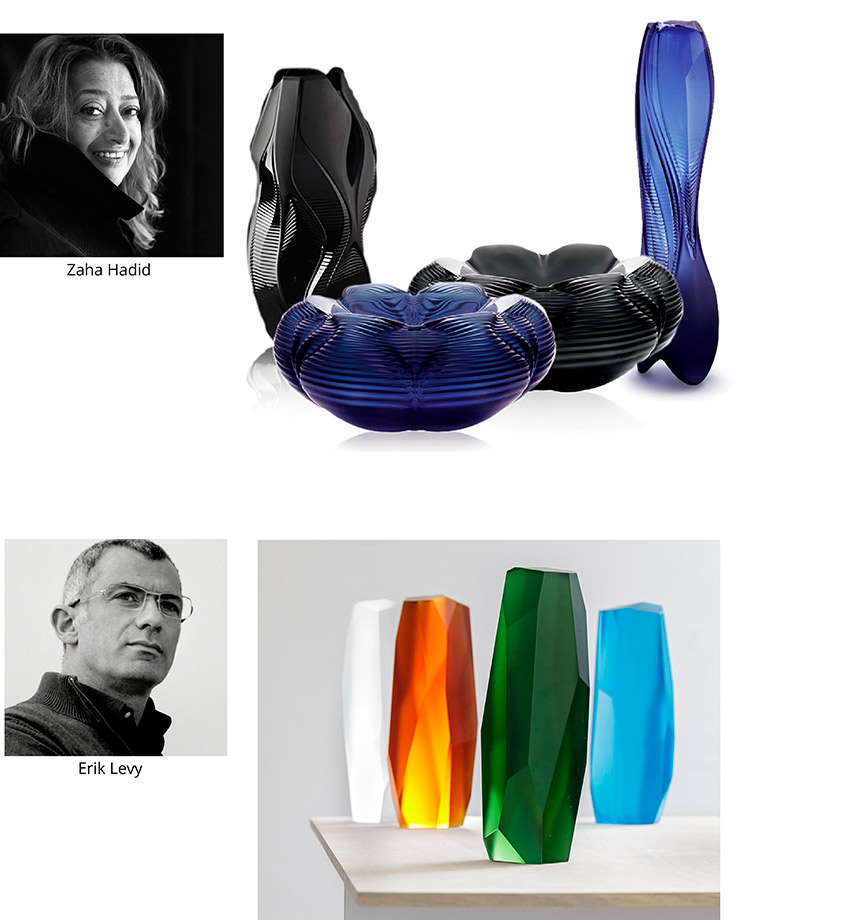
INSPIRATION, FIRE AND CRAFTS
TO CREATE WONDERS
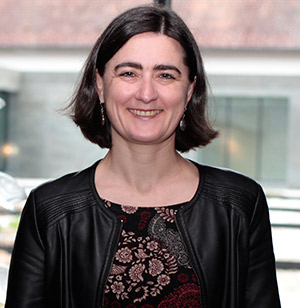 Véronique Brumm
Véronique Brumm
Conservator, Lalique Museum
in Wingen-sur-Moder, France
“Creative mind, fire and expert hands were necessary and today they are too, to obtain the beautiful pieces in crystal that are the trademark of the house Lalique”.
“More than 100 years have passed since René Lalique created a style and a way of doing with glass. Only men have changed but the spirit and rigor in quality are the same. We have creatives, all the fire that is necessary and the most expert hands of artisans”.
“What makes the Lalique Museum particularly important in the world is its dedication to preserving the heritage of one of the greatest creators of recent history and, at the same time, to keeping alive artisan expertise of incalculable cultural value”.
This is hard work, but the result is worth it
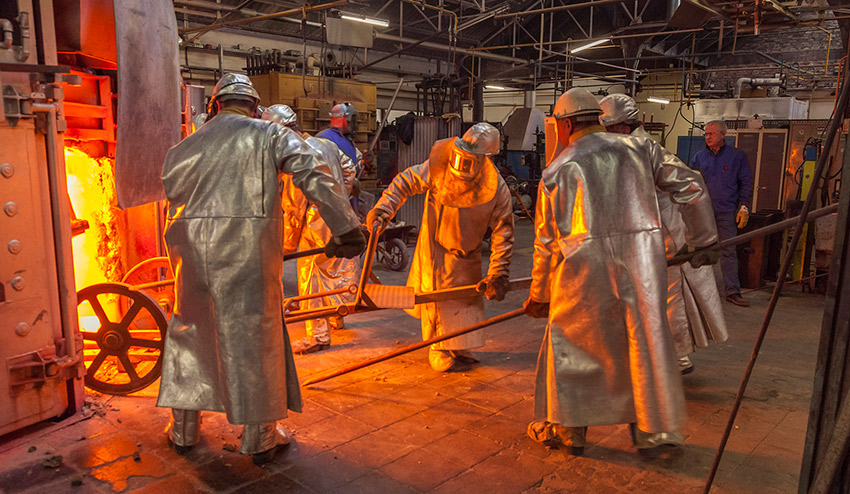

Expert hands and passion for perfection and beauty
